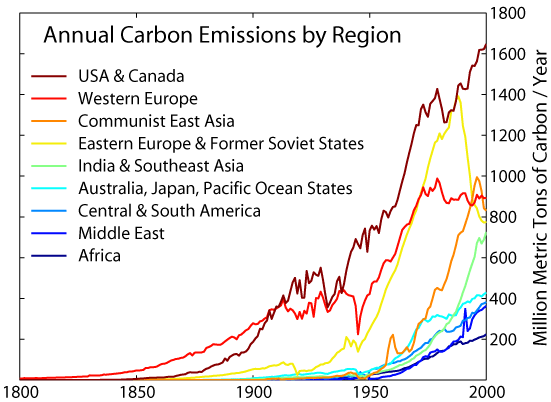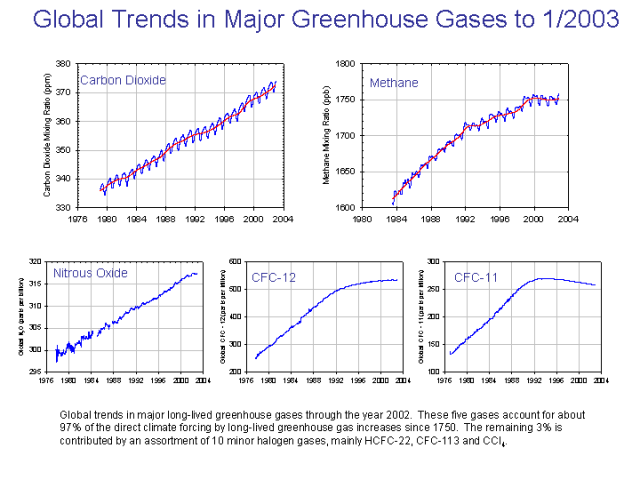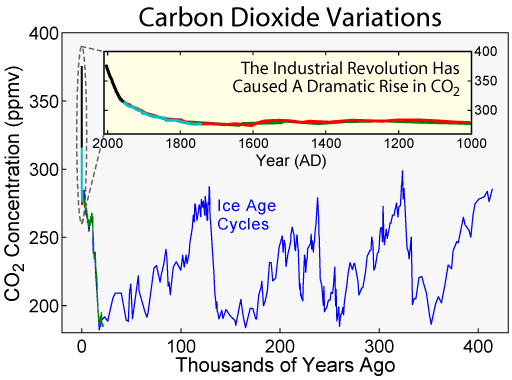Earth Day - Speaking For The Trees
Hello! This is the Environmental & Health Expert's 3rd post, entitled "Earth Day - Speaking for the trees". Recently I went on Channelnewsasia.com and happened to stumble upon this quick poll on "Earth Day". Surprisingly, although Earth Day is observed worldwide in 175 countries annually to highlight current environmental issues, more than half the people who took the poll do not know about Earth Day and its significnace. Therefore this post will be serving as a guide to Earth Day: how it is related to globalisation, its impact on the global community and my thoughts on Earth Day.
Materials: Web Poll on Earth Day, Images of Earth Day Flag and on How Earth Day is Celebrated
Sources:
http://www.aas.com.sg/features/archive/f05022.htm
http://en.wikipedia.org/wiki/Earth_day
http://www.earthday.net/climatechange.aspx
http://www.more4kids.info/392/earth-day-and-your-kids/
http://info.channelnewsasia.com/cgi-bin/poll/cnapoll1to1.cgi?group=cna_poll&pollchoice=View
What is Earth Day?
Earth Day, which falls on 22 April, is observed worldwide to highlight current environmental issues. It is aimed to raise public concern and awareness about the state of the environment, serving as a global day of observance of environmental problems. Earth Day was first held on 22 April 1970 as a response to widespread environmental degradation. The paragraph below shows how Earth Day came into implementation and the reasons behind its formation.
According to Santa Barbara, California Community Environmental Council:
"The story goes that Earth Day was conceived by Senator Gaylord Nelson after a trip he took to Santa Barbara right after that horrific oil spill off our coast in 1969. He was so outraged by what he saw that he went back to Washington and passed a bill designating April 22 as a national day to celebrate the earth."
The very first Earth Day in 1970 was aimed at demostrating strong political support for environmental agenda and received popular response in the United States. Thousands of colleges and universities, as well as numerous primary and secondary schools, and committees in the nation were involved. In fact, 20 million people participated in the Earth Day celebrations in 1970. Due to the overwhelming response received, Earth Day was considered a success and led people to ponder over the state of the environment and what they can do to improve it. As a result, many important laws were passed by the Congress after the 1970 Earth Day, including the Clean Air Act, laws to protect drinking water, wild lands and the ocean. Also, it also lead to the formation of the United States Environmental Protection Agency.

Earth Day flag
Credits: http://en.wikipedia.org/wiki/Earth_day#Earth_Day_1970
A flag was also created for Earth Day to represent its importance and significance, since flags are used symbolically as concrete representations for abstractions. In this case, the flag is designed with a picture of the Earth in the middle to show that the flag represents Earth Day. Also, the Earth is placed in the centre of the flag to show that Earth is the centre of attention. The Earth also symbolises the united efforts of the world to bring the state of the environment to a better level.
How is It Related To Globalisation?
Earth Day is closely related to globalisation as it is an occasion where the global community attempts to make a joint effort in saving the environment and making the world a better and sustainable home for everyone. Globalisation is the increasing global connectivity, integration and interdependence in the economic, technological, cultural, political, and ecological aspects. The ecological aspect examines global environmental challenges that can only be solved through international cooperation, such as climate change, pollution, as well as the spread and development of diseases and medicine. Today, one of the major and most critical environmental challenges the world faces is climate change. In my first post, I mentioned that climate change is a global environmental challenge that requires global attention and all nations to overcome together. Earth Day is one example of how various nations around the world make a joint effort in saving the environment. Earth Day was first started in America in 1970 with only 20 million participants. Later, the success of Earth Day in America triggered off people's concerns about the environment, thus leading to the spreading of this global culture and ideology - Earth Day. Today, Earth Day is celebrated in 175 countries around the world with half a billion people involved in it. We can see a certain form of cultural homogenization where a global culture is being cultivated. Therefore Earth Day is closely related to the cultural and environmental aspects of globalisation.
What is Its Impact?
As mentioned earlier in this post, Earth Day is celebrated in 175 countries around the world today with half a billion participants in total. It is coordinated by the Earth Day Network which is a non governmental organisation aimed at changing the human behaviour and provoking policy change. Indeed, Earth Day places a huge impact in various nations today as they come up with different methods to celebrate this day and at the same time, save the environment.
Activities Conducted Around the World on Earth Day:
- Singapore - Earth Day is renamed Car Free Day and the public is encouraged to refrain from driving on that day and use public transport or cycle.
- Washington State, USA - The Car Free Olympia Challenge takes place and directors from all state agencies and government officials are challenged to be car free that day.
- Manila, The Phillippines - A 50 km bike tour of seven cities around Metro Manila is organised by The Firefly Brigade. This is to encourage the use of environmentally friendly transport.
- Amman, Jordan - Al-Urdon Street which connects East Amman and North Amman is closed for youth to join its Mayor in flying balloons and kites carrying messages against air-pollution.
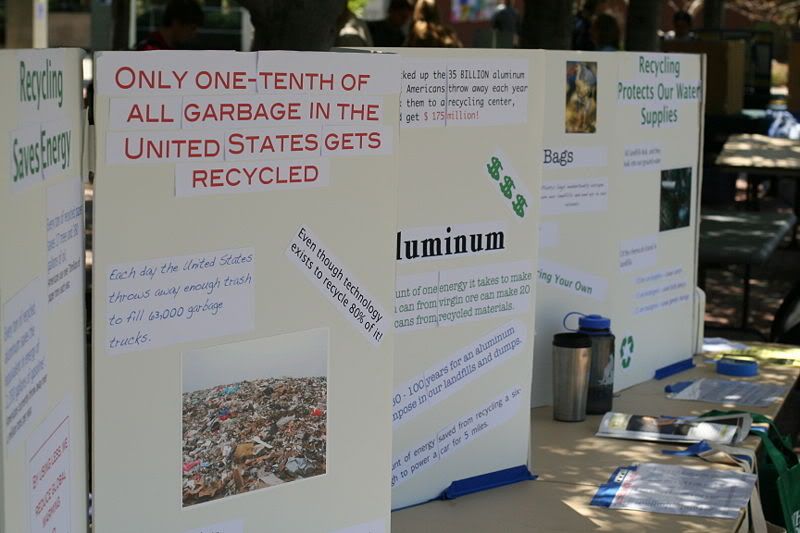
Artwork by Students from City College, San Diego in celebration of Earth Day 2007
Credits: http://en.wikipedia.org/wiki/Image:Earth_Day_2007_at_City_College_San_Diego.JPG
Earth Day is celebrated in schools today so as to educate students in respecting the Earth at a young age. Students learn to understand the importance of Earth Day as they will be the caretakers of this planet in the future. On Earth Day, students are engaged in meaningful activities which are aimed at allowing students to understand the significance of Earth Day. For example, in the picture above, we can see posters regarding the amount of destruction we are doing to Earth in various aspects. These posters are done by students from City College, San Diego in celebration of Earth Day 2007. Through these activities, students learn about the importance of energy conservation, recycling, respecting nature, saving water and reducing pollution. Working individuals also make it a point to reduce use of electricity or other natural resources on that day, by car pooling, conserving water and electricity as well as recycle their shopping bags.
Thus we can see that everyone can play a part in ensuring that our future generations have a sustainable environment to live in. By doing our part and at the same time, educating them about the importance of saving the environment, we have achieved two of our objectives at the same time. We will be able to save the little resources we are left with and save Mother Earth. Lets do our part as Earthlings: change the human behaviour and provoke policy change!
My Reflections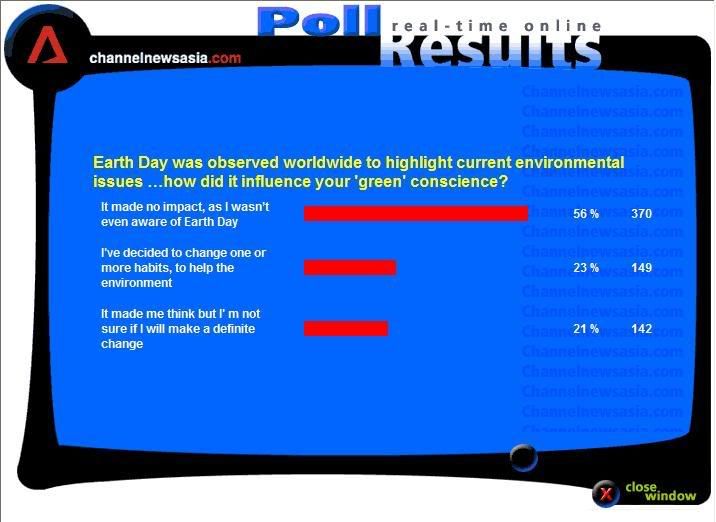
Credits: http://info.channelnewsasia.com/cgi-bin/poll/cnapoll1to1.cgi?group=cna_poll&pollchoice=View
Take a look the poll results above. The question is "Earth Day was observed worldwide to highlight current environmental issues... how does it influence your green conscience?" 56% of the poll takers mentioned that "it made no impact, as I wasn't even aware of Earth Day", 23% mentioned that "I've decided to change one or more habits, to help the environment" and 21% chose the option "It made me think but I'm not sure if I will make a definite change".
After looking at the poll results, it is upsetting to know that while the global community is trying its best to reduce pollution and combat climate change, most Singaporeans are still consuming large amounts of electricity and creating pollution. It is mentioned earlier that Singapore celebrated Earth Day, ironically 56% of Singaporeans are unaware of such a day. Does this not show the ineffectiveness of the Car Free Day? Moreover, Singapore is famous for its keenness in participating in global campaigns and agreements in combating climate change and reducing pollution. Yet, 78% of Singaporeans are inactive in environmentally friendly practices. With only 1 out of 4 people supporting such campaigns, the success rate of these campaigns are very low. In fact, the amount of environmental damage done by these 3 people will most likely outweigh the help that 1 person is willing to save the environment. Eventually efforts in saving the environment and extending the sustainability of the planet will be futile. So why try when we know fully well that not much results will be yielded from it? If we continue to create damage to the environment at this rate, why make it a point to sign the Kyoto Protocol and why implement the 3 'R's (Reuse, Reduce and Recycle) when we know fully well that these practices are unlikely to gain the support of the people?
In my opinion, if we are really sincere in extending the sustainability of this planet, more has to be done to save the environment. I believe that first, we need to raise public awareness on the consequences of our actions if we fail to save the environment. Propaganda through the various forms of media has to be used so that the public will see the importance of saving the environment. Second, more environmentally friendly practices can be implemented once the general support is gained. In this way the general public can be more involved in saving the environment. Third, such campaigns should only be carried out on a regular basis to gain the support of the people. By organising such campaigns every now and then, we will be exerting pressure on the public. This pressure will eventually force the public to overturn these environmentally campaigns. The initial goal is to save the environment, and thus we need to make sure our actions are aimed at saving the environment, not pressuring the people.
With these 3 points in mind, I'm sure that future environmental practices will be a better success than before. As such, I hope that those post has served as an effective guide to Earth Day and how it is related to globalisation. Till next time then, bye!
Yours,
the Environmental and Health Expert
serene!
Puff it or Snuff it!
Hi, this is the second post entitled "Puff it or Snuff it!" This post will be highlighting the haze problems caused by Indonesia and its effects on neighbouring nations, as well as the Earth. The objective of this post is to explain that if Indonesian farmers continue to "puff it", we might eventally "snuff it" due to all these environmental and health problems. In this post, I will be covering what "Slash and Burn" is, how it is related to globalisation, its impact on the global/regional community and my reflections on this issue.
Materials Used: Article named "Indonesia smoke blankets region"
Source: http://news.bbc.co.uk/go/pr/fr/-/2/hi/asia-pacific/5415944.stm
_____________________________________________
Indonesia smoke blankets region
Taken from BBC, dated 7 October 2006
Large parts of Indonesia, Malaysia and Singapore have been hit by smog from illegal bush fires burning on the islands of Sumatra and Borneo.
Visibility in parts of Borneo was reduced to 50m while Singapore recorded its worst pollution levels since 1997.
Flights were cancelled, cars put their headlights on in the middle of the day, and Singapore warned citizens against taking exercise outdoors.
Indonesians use the fires for land clearance despite a government ban.
Hundreds of fires
Visibility was down to 50m in Central Kalimantan, on Indonesia's part of Borneo island.
Environmental agencies reported from 500 to 2,000 fires burning in the flammable peat soils of the region.
"The worst situation is in Central Kalimantan now. Most areas in the province contain peat," Malaysian forest fire chief Purwasto told Reuters news agency.
"We cannot estimate the extent of the fires now."
Singapore's environment agency recorded a pollution index level of 128 early on Saturday and said satellite data showed 506 fires burning on Sumatra island.
The pollution index is the highest level seen in Singapore since smog covered the region in 1997, causing billions of dollars in damage and lost tourist revenue.
The index had been at 80 on Friday. Any level above 100 is considered harmful.
Plantations blamed
Indonesia has outlawed using fire for land clearance but the laws are widely flouted in remote areas of the country, and the government seems helpless to control the situation, says the BBC's Lucy Williamson in Jakarta.
Pungent smoke from the fires is an annual problem across south-east Asia during the dry season.
Farmers have traditionally used brush fires in agriculture, but environmentalists claim the problem has become more serious in recent years due to timber and oil palm companies clearing land for plantations.
"The fires are seasonal and very predictable, but the government never implements effective measures to prevent and manage them," Nordin, a spokesman for Indonesian environmental group Save Our Borneo, told AFP news agency.
Story from BBC NEWS:
http://news.bbc.co.uk/go/pr/fr/-/2/hi/asia-pacific/5415944.stm
Published: 2006/10/07 13:45:42 GMT
© BBC MMVII
________________________________________________________
What is Slash and Burn? How is it related to globalisation?
Slash and burn refers to the cutting and burning of forests or woodlands to create fields for agriculture or pasture for livestock, or for a variety of other purposes. In shifting cultivation, slash and burn is the simplest method to clear land after the harvest of crops. By burning the leftover parts of crops (eg. roots), slash and burn has provided a simple and easy way of obtaining natural nutrients for the next round of crops being grown. The practice of slash and burn has ensured farmers a cheap and convenient way of obtaining natural nutrients for their crops without having to purchase expensive chemical fertilisers. Therefore slash and burn is popularly carried out in rural areas.
Globalisation is the development of technologies and the shrinking of the world, ecological interdependence, cultural homogenization, crumbling of national boundaries and the development of world markets, economical interdependence and dominance. In this post, we shall examine how globalisation leads to ecological interdependence and the crumbling of national boundaries, as illustrated by the example of slash and burn. Globalisation results in ecological interdependence as no country is cut off from the rest of the world. All countries are engaged in global relations in one way or another, be it economical, political, social, cultural, or environmental. Globalisation leads to the crumbling of national boundaries, which also meant that globalisation leads to ecological interdependence. The crumbling of national boundaries can be seen in how environmental and health hazards travel across borders, thus having far reaching effects on more than one nation, but the entire regional/global community.
Slash and burn, despite ensuring a cheap and convenient way of obtaining natural nutrients, aften results in environmental hazards such as haze when the fire gets out of control. The article above highlights how slash and burn leads to haze and as a result, health problems. Consequences of slash and burn are also especially highlighted. The regional community is affected when monsoon winds carry the haze to neighbouring nations. Thus we can see an example of globalisation - crumbling of national boundaries. The state has lost much of its ability to control the movement of haze across borders. When the state alone is unable to curb the problem, regional organisations have to interfere to bring the problem under control. With globalisation, ecological interdependence is common and the sovereignty of nations is challenged. We can see this in the example of the ASEAN Agreement on Transboundary Haze Pollution. The ASEAN Agreement on Transboundary Haze Pollution is an environmental agreement signed in 2002 between ASEAN nations to bring haze pollution under control in Southeast Asia. This shows how ASEAN has to interfere in order to solve the haze problem. An agreement was passed so as to bring the haze situation under control and prevent similar events from occurring in the future.
What are its impacts on the global/ regional community?
Indonesia is an agrarian society with about 80% of the 200 million people population living in rural areas. Majority of this 80% of the population practises farming as a way of survival. Since subsistence farming is the easiest and best method to sustain huge families, it is often practised in rural areas, with shifting cultivation being one of the more popular farming methods. As mentioned in the previous section, slash and burn ensures farmers a cheap and convenient way of obtaining natural nutrients for their crops without having to purchase expensive chemical fertilisers. Therefore it is widely practised in Indonesia. During harvest seasons, after farmers harvest their crops, they set fire to their piece of land to burn the unwanted parts of the crops away. In the meanwhile, they will begin to farm on another piece of land. However, though they only intend to burn a small piece of land, the fire eventually gets out of control and burn up a much larger area. Even if each farmer only burns a small piece of land, with such a huge population a huge area of land would have been destroyed. However, as the fire gets out of control, the area of land being burnt is hard to imagine!
Slash and burn has resulted in an increase in greenhouse gas emissions, thus polluting the environment. This activity not only depletes the number of oxygen providers, but also reduce amount of carbon dioxide being removed by trees. As plantations are cleared, average daily temperatures increase immensely, thus triggering off El Nino. Global warming is increasingly accelerated too. Is it not an irony that while the global community is trying to curb greenhouse gas emissions, one part of the Earth is effortlessly increasing its greenhouse gas emissions?
Moreover, slash and burn has resulted in haze, which leads to health and environmental problems not only within Indonesia, but also among regional countries. Visibility is greatly reduced to a few hundred metres away in neighbouring countries, which leads to an increase in road accidents. Inevitably there will also be an increase in the number of asthma cases, or other health problems like eye irritation and cough.
More importantly, there will be an immense dip in the tourism industry in the region as there will be much fewer people willing to come to Southeast Asia to tour. Many flights will be cancelled due to the haze. As the Pollutant Standards Index (PSI) continues to rise, Singaporeans will reduce their outdoor activities. As noted in the article, during the 2006 Southeast Asian haze, billions of dollars were lost. Therefore we can imagine the damage done to our economy due to the haze.
Also political relationships were strained as leaders from Singapore and Malaysia criticised the inability of the Indonesian national government in stopping the fires. Indonesia suffers the criticism of the regional and global community for being the cause of the haze. Moreover, in 2006, the Indonesian government announced that it is unable to stop the bush fires. As a result, Indonesia suffers from more humiliation as its government is increasingly being labelled "incompetent".
Finally, I would like to also make a point that it is mentioned in the article that the government never implements effective measures to curb the situation. In 2006, Indonesia officially announced itself unable to stop the fires and suggested a regional fund being set up to help it handle future similar situations. The fires were so intense that the Indonesian government claimed itself unable to help. Instead, neighbouring countries like Singapore and Malaysia have to send aids over. Thus we can see that just an environmental hazard actually have the power to render a government incapable.
As such, we can see the immense impact of the haze not only on Indonesia, but also neighbouring countries. The nations suffer from the drastic consequences of the haze, be it economic, political, social and environmental. None of the nations stand to gain. Therefore more has to be done to ensure the ceasing of similar events in the future.
Reflections
Being an Environmental & Health Expert, I would like to express my utmost disappointment how the Indonesian government handles such situations. For example in 2006, the Indonesian government mentioned about it being unable to control the haze situation and suggested the setting up of a regional fund to help bring similar situations in the future under control. I believe that the Indonesian government should not have given up or mentioned in public about being unable to control the haze situations. This will only lower the self-esteem of the people and cause them to be demoralised. The role of a state government is to serve as the executive function of the state and lead the nation to peace and prosperity. Instead of guiding citizens to national prosperity and peace, the Indonesian government gave up when it faced difficult situations. Is this what a government supposed to do? No, I do not think so. Maybe what the Indonesian government could have done is to gather the strength of the people in fighting the bush fires. With a large manpower, the fire would have been put out in a much shorter time.
I have no intention of criticizing any party responsible for the haze situation. However, I feel that perhaps preventing such fires from occurring would be a better choice. Farmers living in rural areas do not have a clear idea of the consequences of their actions. What they are interested in and wish to do is to feed their families. Therefore they need to understand that what they do are not beneficial. Thus I believe public education can be implemented to help raise awareness about the disadvantages of slash and burn. Incentives and rewards should also work hand in hand with public education to better facilitate its efficiency. Farmers might stubbornly refuse to stop clearing land by fire unless they stand to gain from it. Therefore the implementation of incentives and rewards should also be implemented together with public education. This will thus encourage them to switch from slash and burn to a more expensive yet environmentally friendly way of clearing land. Also, the price of chemical fertilisers and machinery can be lowered so that poorer farmers can afford it. Then, more farmers will be able to afford chemical fertilisers and machinery. As a result, they will not require natural nutrients or clearance of land via slash and burn. All these actions can help reduce the occurrence of slash and burn fires.
Finally, I hope that I have provided a clearer view of what slash and burn is, and how it is related to globalisation. Also, I hope that I have addressed the impact of slash and burn on the global and regional community, as well as my reflections on this issue. I'll end off with a quote by Henry Ford II. "No society of nations, no people within a nation, no family can benefit through mutual aid unless good will exceeds ill will; unless the spirit of cooperation surpasses antagonism; unless we all see and act as though the other man's welfare determines our own welfare." Thank you.
Yours,
The Environmental and Health Expert
serene!
The Kyoto Protocol - Just A Prophecy?
The Environmental & Health Expert names this post "The Kyoto Protocol - Just A Prophecy?". Is the Kyoto Protocol just an unrealistic prediction? Is it merely a feeble dream which countries share? Or a weak goal they aspire to achieve? I will be examining what the Kyoto Protocol is and how it is related to globalisation. Also, I will be talking about my opinions on the the impact it results in the world as well as its future outcome.
Materials Used: A Series of Graphs Which Will Be Analyzed
Sources:
http://en.wikipedia.org/wiki/Global_warming
http://en.wikipedia.org/wiki/Kyoto_protocol
*Note: Post is 100% original!
________
What is the Kyoto Protocol? How is it related to Globalisation?
Globalisation is the increasing global connectivity, integration and interdependence in the economic, technological, cultural, political, and ecological aspects. The ecological aspect examines global environmental challenges that can only be solved through international cooperation, such as climate change, pollution, as well as the spread and development of diseases and medicine. Out of the many global environmental challenges, one especially requires urgent attention of the international community as it threatens the survival of the Earth - climate change. Climate change is the change in the Earth's global climate over time. This change is influenced by both natural and human factors. However, since the Industrial Revolution, human factors have been contributing more and more to climate change. Their increasing emissions of greenhouse gases have risen to become the main 'ingredient' of climate change. Therefore, the Kyoto Protocol is implemented to help improve the state of the Earth. The global community needs to cooperate in order to bring climate change under control.
The Kyoto Protocol to the United Nations Framework Convention on Climate Change is an amendment to the international treaty on climate change, assigning mandatory emission limitations for the reduction of greenhouse gas emissions to the signatory nations. Currently, it is the only global action plan to curb carbon emissions and expires in 2012. It is rejected by the world's biggest polluter, the United States, and does not bind developing nations such as China and India. Below are some graphs which show the annual carbon emissions in each region, global trends in greenhouse gas emissions and lastly the carbon variations in time.
What do the graphs show about the impact of the Kyoto Protocol in various nations?
Graph 1
The first graph above shows the amount of greenhouse gas emissions in each region. From the graph, we can trace the increase/decrease in greenhouse gas emissions as in the past 200 years. The graph starts around the period when the Industrial Revolution began until the new millenium. We can observe that after the Industrial Revolution, the amount of greenhouse emissions have increased gradually until 1900 onwards when the emissions rise rapidly. However, i would wish to highlight that after the Kyoto Protocol was signed in 1997, the greenhouse emissions of most nations seem to either have dropped slightly or increased less rapidly. This actually shows the impact of the Kyoto Protocol in countries. Nations which have ratified the Kyoto Protocol have attempted to abide by it. USA, which accounts for 30% of the emissions in the world, has rejected the treaty. Therefore the graph which shows the trend in the greenhouse gas emissions for USA is constantly increasing. Not only USA, Canada is also denying the fact that action needs to be taken to curb carbon emissions. Both countries continue to contribute largly to global warming. The greenhouse gas emissions for India is increasing constantly due to the fact that it is a developing nation and need not abide by the protocol yet.
Thus we can actually see that the Kyoto Protocol does not have far reaching effects on every nation in the world. In fact, there are countries who disregard the Kyoto Protocol. The biggest contributor to global climate change, the US, did not sign the Kyoto Protocol. Also, Australia did not sign in. Canada signed the protocol but failed to follow it. Thus we can see that the Kyoto Protocol does not apply to these countries - there is little impact. The Kyoto Protocol also does not have much impact in developing nations such as China and India. This is because they are still developing and need not abide by it.
Graph 2
This table shows the global trends in greenhouse emissions in 2003. Note that this is after the signing of the Kyoto Protocol in 1997. In the first small graph, the carbon dioxide levels is increasing steadily. There is no drop in the amount of carbon dioxide being released into the atmosphere. One reason for this is that the biggest contributer of carbon dioxide (through industrial activities) USA, has not ratified the protocol. It is still emitting large amounts of carbon dioxide into the atmosphere. China, the second largest contributor to greenhouse gas emissions, is currently not required to abide by the protocol - China is still contributing largely to global warming. Moreover, the world population is increasing rapidly. The consumption of carbon dioxide in many areas is increasing, thus the overall levels continue to rise rapidly. Also, the levels of nitrous oxide is increasing. Nitrous oxide mainly comes from farming activities or cows. Since the world population is expanding at a fast rate, more food is needed to feed the population. Therefore this leads to more nitrous oxide being emitted. However, take a look at the graphs of methane, CFC-12 and CFC-11. CFC-12 is increasing less rapidly after the 1990s. In fact, it is almost at a constant rate. The trend of CFC-11 and methane actually dropped too.
In this graph, we can see that all the nations in the world have taken into two sides. The first group are countries which the Kyoto Protocol has far reaching impact on, and the other which the Kyoto Protocol has not much impact on. The Kyoto Protocol applies to countries which have signed the Protocol, yet developing nations need not abide by it. What does this show? This shows that although majority of nations have signed the Kyoto Protocol, not all of them need to abide by it. The Kyoto Protocol has far reaching impact on developed nations who have signed the Kyoto Protocol in particular. Third world nations need not have any obligations to abide by the protocol but they can participate. In the first graph, I have already explained how the Kyoto Protocol does not have much impact on certain nations. Now, countries which have to abide by the Kyoto Protocol have decreased further.
Graph 3
Finally this is the last graph of the three. it is different because it shows the cause of the implementation of the Kyoto Protocol, unlike the previous two which talks about the result of the implementation.
The graph shows the carbon dioxide concentration and its variations over time. The time range is from 0- 400,000 years ago. Notice that there is an almost periodic trend in the carbon dioxide concentration before the Industrial Revolution. There seems to be a pattern in the concentration of carbon dioxide in the atmosphere. We can see a trend in the carbon emissions until the Industrial Revolution began. Since the Industrial Revolution began, there is an increase in the number of industrial activities and all these activities emit carbon dioxide. The Industrial Revolution caused a drastic increase in the carbon dioxide emitted, even till today. The continual increase in the amount of carbon dioxide in the atmosphere will lead to global warming in near future and the wiping out of mankind. Therefore the Kyoto Protocol is implemented to delay this from happening.
The Kyoto Protocol is meant to exert pressure and have heavy impact on nations to reduce greenhouse has emissions as under the obligations. Each nation has its own resposibility to fufill the Protocol. For example, between 2008-2012, developed nations need to reduce their greenhosue gas emissions by 5% below their 1990 levels. European Union member states need to reduce by 15%. However, currently the reduction ranges from 8% for EU to 10% increase for Iceland. Therefore we can again, see that although the Kyoto Protocol is implemented to place impact on countries so that they will try to reach the reduction level, in reality few countries manage to fufill their obligations.
Further Reflections
In conclusion, I believe that the Kyoto Protocol is a good global action plan to curb carbon emissions although it has received much criticism. Since the main factor of global warming is the increase in carbon dioxide in the atmosphere, we should tackle the situation by reducing the amount of carbon dioxide being emitted into the atmosphere. The Kyoto Protocol aims to save the Earth and the wiping out of mankind by delaying global warming through the reduction of greenhouse gas emissions. Also, by ratifying this protocol countries reduce their greenhouse emissions, thus doing their part for a cleaner and greener Earth. Although the amount of greenhouse emitted is still increasing, it is increasing at a slower rate. Moreover, there have been successes in the reduction of greenhouse emissions. The United Kingdom and Sweden have succeeded in reducing the amount of greenhouse gas emitted. Therefore this show that the Kyoto Protocol is not mere wishful thinking. It is a fair protocol which work by the concept of "a common but differentiated resposibility". Different nations help save the Earth according to their abilities. Since developed nations contribute more to greenhouse gas emissions, they have to reduce their emissions by a larger percentage under the protocol. Developing nations have only been contributing relatively low levels of emissions. China and India are currently exempted from the requirements of the protocol as they are still developing.
USA has chosen not to ratify the protocol as the protocol is said to be doing too much damage to the US economy. Bush even described the protocol as "an unrealistic and ever-tightening straitjacket". Later, the White House even questioned the science behind global warming and that millions of jobs will be lost if USA joins in the pact. USA refuses to ratify the protocol ifor fear that China and India can then easily catch up with its economy. However, I do not think that these are valid reasons to not ratify the protocol. The Kyoto Protocol is meant to help signatory nations reduce greenhouse gas emissions; it is not aimed to delay economic progress. the US believes that millions of jobs will be lost due to the plunging of the US economy by signing the pact. A study in Nature discovered that "accounting only for local external costs, together with production costs, to identify energy strategies, compliance with the Kyoto Protocol would imply lower, not higher, overall costs." So why does USA accuse the protocol to be costly?ALso, majority of the greenhouse gas emissions come from developed countries and greenhouse gas emissions are still relatively low in developing countries. Its only right that developed countries reduce their emissions by a larger percentage. This can set a good example for developing nations to follow when they become developed. Also, i would like to clarify that the science behind global warming is certified to be true. We have seen the effects of global warming: ice caps melting, more often occurrence of natural disasters (such as hurricanes in 2005), increase world temperatures etc. How can all these be false? Are these arguments by the US merely excuses for its rejection of the Protocol?
Given the reasons above, I really hope that USA would ratify the Kyoto Protocol. This is because when the current treaty expires in 2012 and USA has not ratified it, many other nations would follow suit and by then, all the previous efforts to save the environment would be futile.
Yours,
The Environmental & Health Expert
♥ SERENE.
